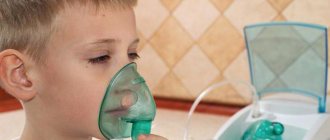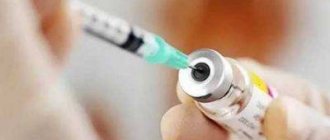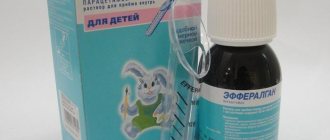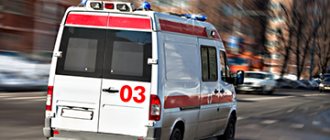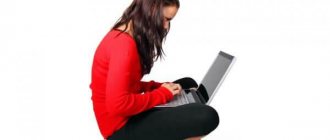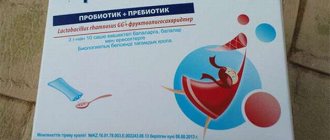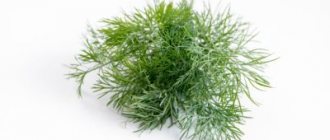Is inhalation allowed for children with fever?
This question is often asked by parents when their child has a fever, coughs or is “snotty.”
Many of them know that when any respiratory disease occurs, the body actively fights the pathogen, which contributes to a rise in temperature during this period. These changes can be a serious burden for the baby’s body. And any external thermal influence (for example, hot foot baths, wrapping, etc.) can threaten his life, so parents doubt whether it is allowed to do inhalations at a temperature or not?
The pharmacy chain has a large selection of inhalers, but many instructions for the devices state that it is prohibited to use them at a body temperature above 37.5 °C. Despite this, there are indications for which inhalation is simply vital.
A rise in the baby’s body temperature to very high numbers indicates the body’s inability to fight the infection on its own.
When inhalations are prohibited
Inhalations are prohibited in the following cases:
- tendency to nosebleeds;
- cardiovascular diseases or the likelihood of their occurrence (these include: severe heart defects, arrhythmia, heart attacks, strokes, heart failure);
- purulent sore throat, otitis media, sinusitis in a child;
- pneumothorax, bullous pulmonary emphysema;
- nasal polyps;
- pulmonary hemorrhages.
When is inhalation allowed?
If the temperature rises above 37.5 °C and there is an urgent need for inhalation, it is allowed, but only with a nebulizer.
Inhalation with hot steam when the temperature rises above 37.5 °C is prohibited, as this can contribute to an even greater rise in temperature.
Inhalations at fever are allowed if the baby has:
- obstructive bronchitis;
- laryngitis;
- laryngotracheitis;
- bronchial asthma and other diseases accompanied by a sharp narrowing of the airways.
An increase in body temperature in these cases is not a contraindication for inhalation therapy, since there is a high risk of suffocation.
Why is temperature not compatible with certain types of inhalations?
Steam inhalations for hyperthermia are prohibited due to the fact that inhaling hot vapors can cause overheating of the body and even convulsions. The risk group includes children who have a tendency to develop febrile seizures.
What can you do with inhalations at fever for children and adults?
At a body temperature of 37-37.5 degrees, children and adults can be given inhalations with saline solution, Berodual, Pulmicort, Lazolvan, antibiotics, antiseptics, acetylcysteine, and antiviral agents.
Pulmicort
The drug Pulmicort contains a hormone similar in action to adrenal cortisol - the glucocorticosteroid budesonide. It has a strong anti-inflammatory effect on the bronchi:
- reduces swelling;
- inhibits mucus production and sputum secretion;
- reduces the sensitivity of the bronchial branches to irritants and allergens.
At high temperatures, it can reduce it by weakening the activity of inflammation. Use is indicated for bronchial asthma to prevent exacerbation (course treatment).
Pulmicort is prohibited for children under six months of age. If the patient has a viral, bacterial or fungal infection, tuberculosis, then this drug can worsen its course, as it suppresses the immune system. Therefore, for infectious diseases it is prescribed only under strict control of tests, together with antibacterial and antiviral agents.
Inhalation with saline solution
Saline solution (0.9% sodium chloride solution) is used at elevated body temperatures to moisturize the mucous membranes, thin the mucus and facilitate its removal. It helps clear the airways of accumulated mucus and germs.
It is rarely recommended in its pure form, mainly in case of contraindications to the main drugs. Indicated for the treatment of the nasopharynx, bronchi and lungs. Most often, drugs for inhalation are diluted with it. Used at temperatures up to 37.5 degrees in nebulizers of any type.
Watch the video on how to use saline solution for inhalation:
Is it possible to breathe Berodual?
You can breathe Berodual at a body temperature of 37-38 degrees. This drug reduces bronchospasm. It contains two components (ipratropium bromide and fenoterol), which quickly increase the volume of inhaled air and eliminate asthma attacks. Indicated for inhalation for bronchial asthma, chronic bronchitis or pneumonia with an obstructive component (bronchospasm).
Berodual does not interfere with the removal of sputum and the formation of mucus in the respiratory tract, the release of carbon dioxide and the absorption of oxygen by the lungs. Therefore, its use at temperature does not increase the load on the lungs, but it is important to take into account the effect on the heart:
- increases heart rate;
- increases blood pressure (especially the upper systolic reading);
- impairs the nutrition of the heart muscle.
Therefore, Berodual is prescribed with great caution to patients with recent myocardial infarction, rhythm disturbances, tachycardia and heart failure, hypertension, and diabetes mellitus. Under medical supervision, it is administered into the respiratory tract for adrenal tumors (pheochromocytoma) and increased thyroid function (thyrotoxicosis). Self-medication with Berodual is strictly prohibited.
Is it allowed to use Lazolvan?
Lazolvan for inhalation is approved for use at high temperatures up to 38 degrees, since when it is introduced into the respiratory tract:
- reduces the viscosity of sputum;
- the activity of the ciliated epithelium of the bronchi and the removal of sputum increases;
- the formation of protective mucus (surfactant) increases;
- reduces inflammation;
- the drug has an antiviral effect;
- enhances the antibacterial effect of antibiotics.
All this helps to quickly eliminate the acute inflammatory process and reduce the temperature. Used in any type of nebulizer. Approved for children from infancy, but up to 2 years of age, used only on the recommendation of a pediatrician.
Antibiotics and antiseptics
In order to quickly get rid of the causative agents of bronchitis and pneumonia, drugs with an antibacterial effect are injected into the respiratory tract. Inhalation therapy can be the main route of intake or combined with taking tablets and injections.
For nebulizers, broad-spectrum antibiotics are used - Gentamicin, Cefazolin, as well as the antibiotic Fluimucil. The latter medication is a combination of a sputum thinner (acetylcysteine) and the antibiotic thiamphenicol, which is effective against the most common pathogens of respiratory (bronchial and pulmonary) infections.
Applicable for:
- acute and chronic bronchitis;
- pneumonia;
- bronchiectasis;
- suppuration (abscess) in the lungs;
- whooping cough;
- tuberculosis;
- otitis (inflammation of the middle ear);
- sinusitis and sinusitis;
- laryngotracheitis.
In addition to antibiotics, antibacterial therapy also includes antiseptics. They inhibit the proliferation of microbes and have a pronounced local anti-inflammatory effect. Dioxidin, Miramistin, furatsilin solution are used. All these drugs can be prescribed at temperatures up to 38 degrees, and at higher numbers their use is allowed on the individual recommendation of a doctor.
Inhalations with antiviral drugs at fever
Interferon or Laferobion inhalations are used to treat acute viral respiratory infections. Solutions of these drugs are especially effective in the very first days of illness. They suppress the spread of viruses, reduce temperature, and improve breathing.
Two or three procedures for the very first symptoms (nasal congestion, body aches, sore throat) can prevent the development of the disease or significantly alleviate its course.
Acetylcysteine for fever
Preparations based on acetylcysteine (ACC injection, Fluimucil) have the ability to thin thick mucus and accelerate its removal from the bronchi. In addition, it reduces the inflammatory response and reduces the manifestations of intoxication, including alleviating the condition at elevated body temperature. Inhalations are allowed up to 38 degrees for the following diseases:
- tracheitis;
- bronchitis;
- laryngotracheitis;
- pneumonia;
- bronchiectasis;
- sinusitis;
- otitis;
- abscess in the lung;
- blockage of the bronchus with impaired ventilation of the lung tissue (atelectasis).
It is forbidden to use drugs that suppress cough together with acetylcysteine, since under its influence a lot of sputum is formed, and it must be actively eliminated. The combination with ambroxol (Lazolvan, Ambrobene, Mucolvan) helps to quickly clear the respiratory tract.
Nebulizer and other types of inhalations
There are several ways to carry out inhalations:
- “grandmother’s or folk method” is inhalation over potatoes, herbal decoctions, essential oils, steam, hot water. “+” of this inhalation method: the mucous membranes are moistened and the tissues of the respiratory tract are warmed, their irritation is eliminated, blood circulation is improved, and leukocytes and other cells of the immune system are activated at the site of inflammation (which contribute to recovery). This method is effective if the child has a runny nose and sore throat. “-” of this method: it is not effective for diseases of the bronchi and lungs (since large drops of steam do not penetrate these organs) and is prohibited when the temperature rises above 37.5 ° C;
- using a glass inhaler. This method is based on inhalations with various essential oils. Its “+”: inexpensive, easy to use, compact. “-” of this device: fragile, and may also cause an allergic reaction to essential oils;
- using a steam inhaler. Its effect is achieved due to the fact that thermal evaporation of medication solutions occurs. When warm steam is inhaled, the mucous membrane of the upper respiratory tract is softened and the therapeutic effect of the medicine is enhanced. Its “+”: inexpensive, can also be used for cosmetic purposes, easy to use, and can be used for inhalation with medicinal plants and oil solutions. “-” inhaler: it is prohibited to use it for infections in the lower respiratory tract and for small children; some medicinal substances lose their effectiveness after heating;
- using an ultrasonic nebulizer. Medicines are sprayed using ultrasonic vibrations. Medicines become a cool aerosol and penetrate the upper and lower respiratory tract. The price of the device depends on the design, configuration, and functions. Its “+”: functional, compact, reliable, has a low noise level, runs on both batteries and mains, and is approved for use by children. The “-” of this inhaler are: expensive, oil solutions and some drugs cannot be used because they are destroyed by ultrasound (for example, antibacterial drugs, mucolytics);
- using a compressor or jet inhaler (nebulizer). Its effect is achieved by spraying a strong stream of air. “+” of the device: is universal for any medications; creates an aerosol suspension with very small particle sizes due to which it spreads into all respiratory tracts; compact, convenient and lightweight (weighs less than a kilogram); You don't need to buy additional accessories for it. Its “-”: expensive and noisy.
At what temperature can a child be inhaled?
An increase in temperature is a sign of the presence of an infectious process in the child’s body, as is the occurrence of a cough.
Parents of a young patient should know how to effectively deal with these phenomena without causing harm to the patient. Inhalations (steam and using a nebulizer) are often used to treat coughs, but these manipulations have contraindications, including when the temperature increases above certain levels. For this reason, it is necessary to have an idea at what temperature inhalation can be done and at what temperature it cannot.
When are inhalations recommended?
If a child or adult has a runny nose and/or cough, the doctor may prescribe inhalations with sodium chloride or other medications.
Indications for prescribing inhalations:
- A runny nose is a constant “companion” of allergic and colds. It is characterized by swelling, congestion, and nasal discharge;
- cough. For various types of cough and various diseases, inhalation promotes a speedy recovery. Thanks to them, the mucous membranes are moistened, mucous discharge is intensively formed, swelling and inflammation are reduced, and a transition from a dry cough to a wet one occurs.
Inhalations are allowed in the following cases:
- acute and chronic bronchitis;
- bronchial asthma;
- pneumonia (during the recovery period);
- cystic fibrosis;
- bronchiectasis;
- ARVI (not in the acute period);
- laryngitis;
- tracheitis, etc.
Inhalation with a nebulizer
The nebulizer has significantly improved the treatment process for young patients with various types of upper respiratory tract diseases.
The device is quite easy to use and ensures the fastest possible delivery of the drug to the most difficult places in the airways.
The drug itself is converted from a liquid state to a vapor state, which improves its penetration into the epithelium of the mucous membranes, thereby effectively combating pathogenic microorganisms.
Almost always, respiratory pathologies are accompanied by an increase in the child’s body temperature. This process is the human body’s response to the effects of pathogens, and the patient thus fights the infection. Despite this, there are limits to temperature increases.
In cases where it rises above 40 degrees, there is a threat to the patient’s life. As for children, it is necessary to actively reduce the temperature when the temperature reaches 38 on the thermometer.
At a temperature, you cannot breathe with a nebulizer , since the particles of the drug delivered to the epithelial lining of the respiratory organs are heated, which can increase it even more. This reaction is extremely undesirable when treating a small child.
Despite this, manufacturers do not prohibit the use of the device at temperatures up to 37.5 degrees. This is especially important in the presence of a spastic process. For this reason, for laryngitis, tracheitis and obstructive bronchitis, using a nebulizer at temperatures up to 37.5 degrees is permissible.
In addition, the procedure is indicated for any respiratory pathologies that are accompanied by a cough, especially an unproductive one . Is it possible to give inhalations to a child at a temperature of 38? In severe cases, doctors allow this procedure.
For inhalations, decoctions of medicinal herbs, antibacterial drugs, mineral water, saline solutions, bronchodilators, and mucolytics are used.
It is important to note that no independent appointment is acceptable. You need to visit a doctor who will conduct an examination and give permission to carry out the manipulation.
If during the procedure the temperature rises, signs of allergic reactions or complaints of vomiting appear, then the session must be stopped and contact a pediatrician to determine further treatment tactics.
Find out how to treat a sore throat without fever.
Medicines for inhalation
The most widespread are alkaline inhalations with mineral water and sodium chloride (saline). They moisturize the mucous membrane and thin out thick mucus.
Today, pharmacies have a huge number of medications that are also used for inhalation.
They belong to:
- antiseptics (Miramistin, Furacilin, etc.);
- antibiotics (Tobramycin, Gentamicin, etc.);
- anesthetics (lidocaine);
- immunomodulators (Interferon, Derinat);
- hormonal drugs (Dexamethasone, Pulmicort, etc.);
- mucolytics (Ambroxol, Lazolvan, Acetylcysteine, etc.);
- vasoconstrictors (Naphthyzin, Adrenaline);
- drugs with combined action (Berodual, Fenoterol);
- herbal medicines (Chlorphyllipt, Rotokan).
It should be noted that this is not the entire list of drugs that are used for inhalation.
All medicinal substances must be diluted with sodium chloride (water cannot be used for this purpose)!
It is important to note the fact that the dosage and need to use a particular drug should be determined only by a doctor!
At what age can inhalations be given to children?
This question worries many parents due to the fact that, unfortunately, colds occur even in newborn children. But a pleasant fact is that today there is such a device as a nebulizer, thanks to which the molecules of liquids are split into aerosols (even a newborn baby can breathe with them).
Inhalations using a nebulizer are allowed for babies from the moment of birth, but their implementation must be supervised by a doctor in the hospital!
Is it possible to breathe above steam at a temperature
You can only breathe above the steam at temperatures up to 37 degrees. This is due to additional exposure to heat and overheating of the body. The procedures often lead to an increase in temperature response, increased weakness, shortness of breath, and increased heart rate.
Steam use is especially dangerous for young children who cannot regulate their body temperature sufficiently. Therefore, in most cases, treatment with a nebulizer is recommended for children and weakened adult patients.
Features of cough inhalations at elevated body temperature are:
- preliminary use of drugs to dilate the bronchi in case of bronchospasm;
- ban on antitussives before the procedure;
- conducting a session 3 hours before bedtime;
- using a combination of anti-inflammatory medications, antibiotics and cough suppressants (for example, Fluimucil antibiotic, Gentamicin with Lazolvan).
Watch the video for advice from a pediatrician about inhalations at fever:
Are inhalations allowed for pregnant women?
Pregnant women are allowed to perform inhalations, but it is better to perform them with the help of a nebulizer, due to the fact that this method is more effective and safe. Many medications act locally and are therefore harmless to the baby. But you should know that it is forbidden to carry out inhalations using essential oils and medicinal plants, as they can contribute to allergies and swelling of the mucous membrane.
Prescription of inhalations for pregnant women should be made exclusively by a doctor!
Is it possible to do inhalations using a device at a temperature?
Respiratory diseases always cause fever. This reaction is the body’s way of resisting the virus. In this case, many therapeutic procedures are prohibited, including steam inhalation, which can provoke an even greater increase in temperature.
Despite the instructions in the instructions for the nebulizer that its use is possible at a temperature not exceeding 37.5, many doctors cannot support the opinion of the manufacturers of the device. They claim that even at high temperatures, treatment with the device will be effective and safe. The particles produced by the device do not heat up. Inhaling them will not cause as much harm as hot steam in the case of a classic steam inhaler.
Sometimes a nebulizer can even help lower body temperature and significantly alleviate the patient's condition. However, if you inhale a child using the device, be sure to consult a doctor. Before prescribing therapy, the doctor will listen to the lungs with a phonendoscope and make a decision.
The procedure using an inhaler is performed for bronchial obstruction; the use of bronchodilators is permitted. Contraindications may include laryngitis, acute respiratory viral infections and the acute phase of development of the infectious process.
